Thermoregulating innovations in bedding products — including mattress pads, protectors and toppers — can help keep your customers from sleeping too hot or cold. Here’s a rundown of the latest technologies
Too hot. Too cold. Too hot again.
No one can get a good night’s sleep when sweating or shivering, tossing bed linens off — and then pulling them back on — throughout the night.
Soft-Tex International, a producer of sleep products based in Waterford, New York, conducted research among 5,000 adults in the United States last summer and found that, next to comfort, the attribute consumers most want in sleep products is temperature regulation, in particular cooling.
“Given that we were in the middle of the pandemic, I was surprised. I thought fresh and clean attributes would be tops, but as has been the case for at least the past five years, cooling continued to be far and above the most important quality after comfort,” says Taylor Jones, vice president of marketing and e-commerce for Soft-Tex.
Temperature-regulating features in sleep products — from the mattress itself to the pad, protectors, sheets, comforters and duvets that dress it — are nothing new, but what is evolving are the technologies used to cool and heat sleepers and the way features like phase-change materials and ventilating fabrics are being combined for better performance.
Here we’ll look at some innovative temperature-regulating mattress pads, protectors and toppers.
From cool to warm
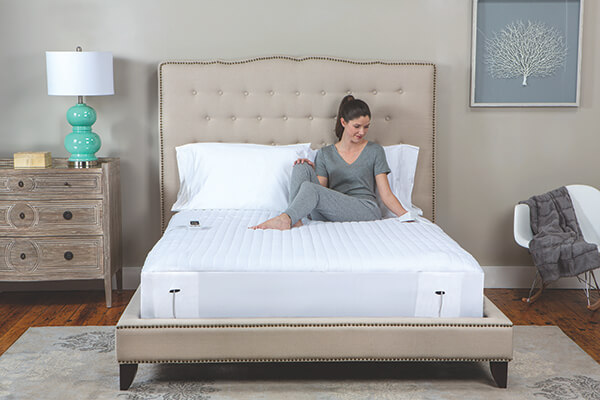
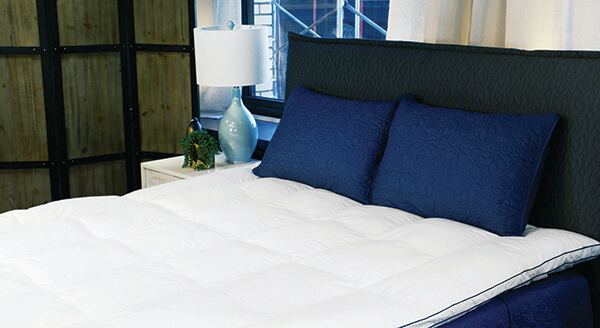
Last summer, Soft-Tex debuted a personal cooling pad, perfect for couples who can’t agree on a sleeping temperature. It’s a thin twin-size pad that can be used under or over a sheet and retails for about $199. The pad incorporates the company’s patented Reactex technology, which uses phase-change material and other advancements to provide not only an initial cool-to-the-touch sensation but also continuous cooling. Reactex also is used in Soft-Tex’s fiber topper and the company is working on a memory foam topper featuring the cooling technology, Jones says.
This spring, Soft-Tex is rolling out a line of cooling toppers, pillows and other accessories under the Serta Artic brand featuring REACTEX technology as part of its licensing deal with Serta Simmons Bedding LLC. Soft-Tex also will produce a separate line of accessories for the iComfort by Serta brand using Soft-Tex’s Cool Coat technology.
“Soft-Tex has been on the forefront of marketing cooling technology and temperature regulation for a while,” Taylor says. “Everybody tries to market a cooling attribute but with Reactex and Cool Coat we have technologies that really deliver. We’re giving people what they want.”
For a cozier sleep environment, Soft-Tex also offers a variety of electric warming products, including mattress pads with adjustable settings and auto-shutoff features ($99 in queen size).
A top topper
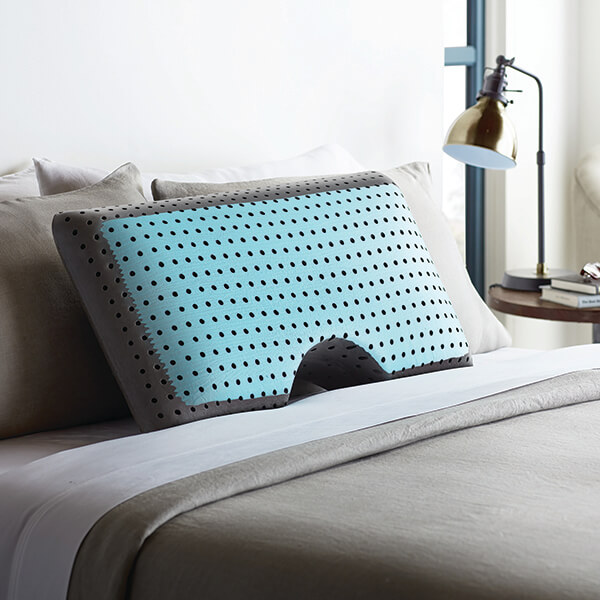
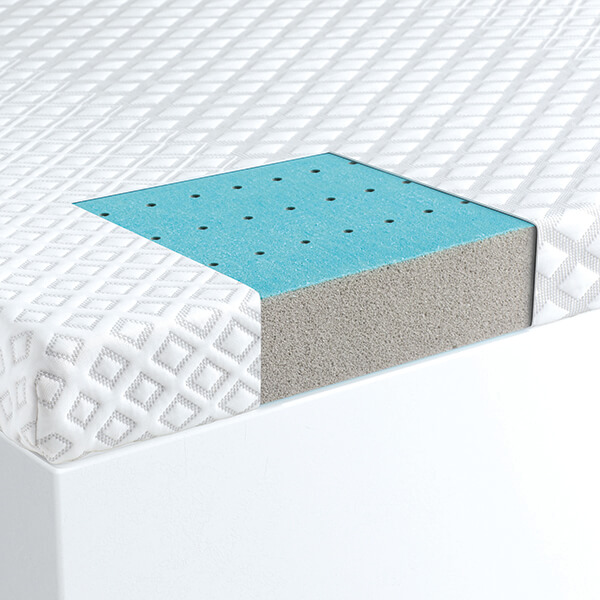
Malouf, a provider of a wide variety of sleep products and furniture based in Logan, Utah, delivers cooling to foam mattress toppers through its CarbonCool technology, which uses activated carbon to “move heat out and away,” as well as Omniphase PCM to provide continuous temperature regulation, according to the company.
Its CarbonCool + Hyperchill 2 ½-inch memory foam topper features a Hyperchill cool-to-the touch surface and the jacquard fabric top helps to “increase airflow with full-body ventilation,” the company says. The topper has “20 times the cooling capacity of gel memory foam” and will help to keep the “optimal body surface temperature” ranging from 87 degrees to 91 degrees, according to Malouf. And, although it’s not temperature-regulating, a no-slip bottom to keep the topper in place is a nice touch. The topper retails for about $610 in queen on the company’s website, though retailers often sell Malouf items for less.
Malouf uses similar technologies, including Omniphase, in its ventilated CarbonCool pillows, which are available in standard bed and shoulder cutout versions. By incorporating similar technologies into a variety of sleep accessories, companies like Malouf create suites of products that retailers can bundle to help consumers enhance the benefits of a new mattress — or improve their sleeping environment until they can spring for a new bed set.
A cool “gift”
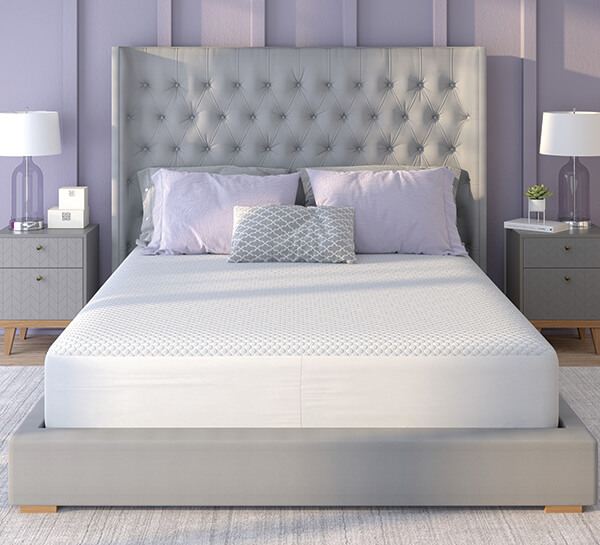
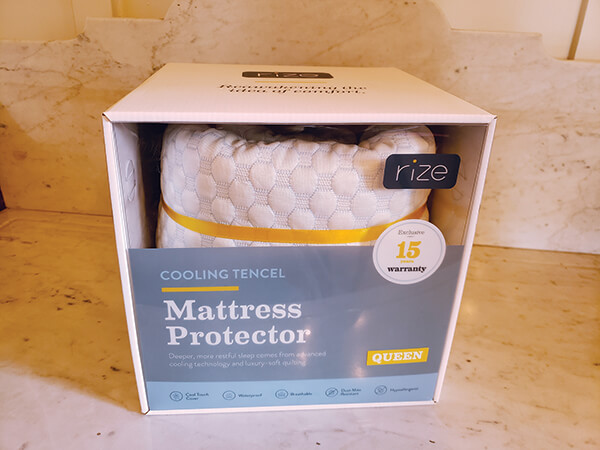
New to the Rize line of sleep products is its Cooling Protector, which has been designed “as the flagship of our protector line,” says Mike Vasko, director of product management for Rize. The Cleveland-based company, formerly known as Mantua Manufacturing Co., offers an extensive line of sleep products, from frames and adjustable bases to pillows to headboards. Rize started offering mattress protection products in early 2020.
The Cooling Protector “uses a higher polyethylene content than most cooling protectors, offering a colder mattress surface when the sleeper is getting into bed,” Vasko says. Pale blue threads help to convey the idea of a cool, comfortable sleep surface, but the blue is subtle enough not to show through sheets. Also for cool sleep, the company offers two breathable, cool-to-the-touch protectors made from botanical fibers that are available in either a quilted or smooth finish.
The Cooling Protector, retail priced at $199 in queen size, offers other features consumers seek in a mattress protector: It’s waterproof, dust-mite resistant, hypoallergenic and fits mattresses up to 18 inches thick. Setting it apart in a store display is the packaging, which adds a clear window to a “soft touch” cardboard cube to give consumers a peek at the protector neatly rolled inside and wrapped with a bright yellow ribbon. When customers open the box at home, they’ll find a tag indicating the product’s Oeko-Tex Standard 100 certification hand-tied to the protector.
“We want to elevate this brand and have invested in the packaging for a very thoughtful presentation,” says Rick Sterzer, executive vice president of sales for Rize. “A lot of other products out there at this price point are in plastic bags. When a customer picks this up off the shelf, they know immediately it’s something different.”
For retailers’ convenience, the protector ships in packs of four, and Rize offers premium display racks to showcase the protectors and other sleep accessories from the company, Vasko says.
Pioneer in Temperature Regulation Has Staying Power
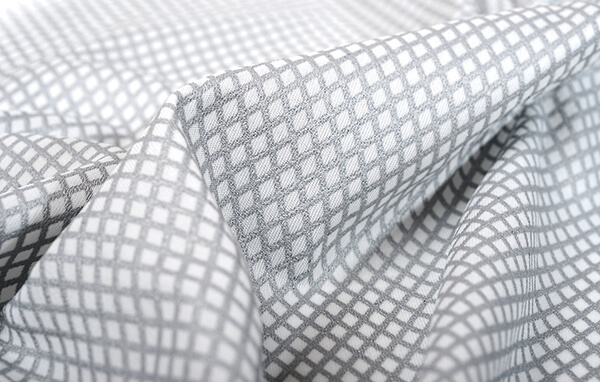
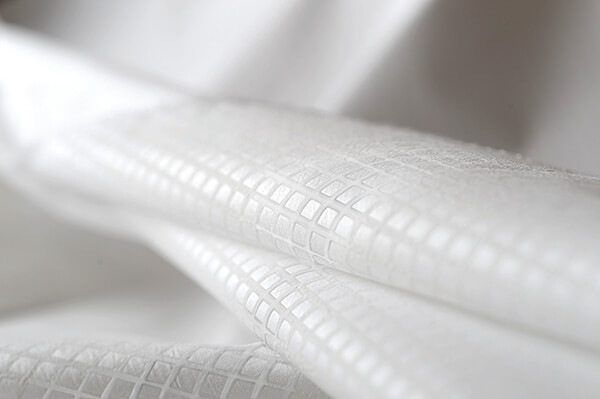
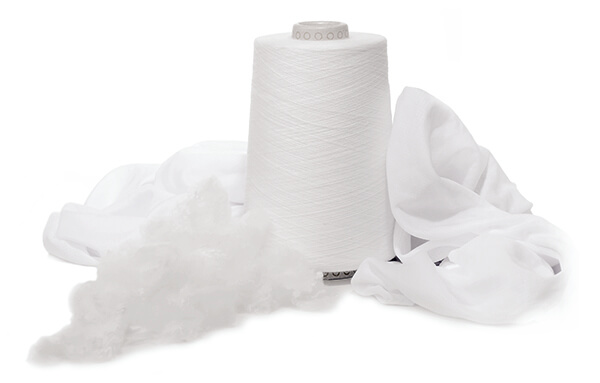
Outlast technology works, in part, by lowering humidity to create a dry, comfortable sleeping environment, the company says.
Outlast is a pioneering temperature-regulating technology, first used in mattresses and other sleep accessories in 2002. Since then, Outlast Technologies GmbH has expanded its portfolio, offering Outlast phase-change material in a variety of applications that help create a more comfortable sleeping environment.
“Outlast was the first company to introduce PCM technology for textile applications on a global scale,” says Dirk Keunen, director of sales for the company, which has headquarters in Heidenheim, Germany.
“From the beginning, the focus has been on optimizing the performance through the blending of different PCM grades. As a result, we were able to bring products to the market with specific melting ranges, offering better performance for specific end uses. Outlast — still today — is the only company focused 100% on PCM technology. It allowed us to develop a wide range of product applications — from fiber overcoating to spraying to printing to dipping — on a wide variety of base materials.”
For the bedding market, Outlast is available in-fiber as polyester and viscose (rayon) fiber fill for items like pillows and duvets, and as a viscose fiber for linens. In products such as mattress protectors and toppers, Outlast technology typically is found as a coated nonwoven or in knitted lining materials, Keunen says.
A key way Outlast helps regulate the climate of bedding products is by reducing the buildup of humidity, Keunen explains. “Comparative tests between Outlast and non-Outlast bedding items show a drop in humidity buildup of up to sometimes (depending on end use and application) anything between 30% and 50%,” he says. “Inside a bed, dry means comfortable and that means better and deeper sleep.”
5 Tips to Make These Accessories Hot Sellers
1. Set up in-store demonstrations. “Our Reactex technology is pressure-activated,” says Taylor Jones, vice president of marketing and e-commerce for Soft-Tex, a sleep products company based in Waterford, New York. “So in-store, we’ll set up a chair with Reactex seat cushions or use a sample pillow for customers to squeeze and hold so they can feel the cold. We call it the ‘8-Second Challenge.’ When consumers experience the feel, they understand.”
2. On e-commerce sites, “update your featured product on the homepage (to be a temperature-regulating accessory), and try a banner at the top of each page. In your mattress section, add a bit of information and a link to the cooling protectors so that shoppers looking for a mattress are aware of the options and benefits,” says Mike Vasko, director of product management for Cleveland, Ohio-based Rize.
3. For e-commerce and on social media, use videos that clearly demonstrate each product’s cooling and warming properties. And, “if you have a blog, write articles around the benefits of cooling technology and sleeping at an optimized temperature,” Vasko suggests.
4. Stock a suite of products. To help shoppers create a bedding ensemble in which each piece enhances the temperature-regulating benefits of the others, offer a related range of products that you can bundle in-store and online.
5. Let consumers speak for themselves. You’ve probably accumulated plenty of customer testimonials raving about your retail brand, customer service and mattresses. Don’t forget to solicit reviews of accessories, too.

